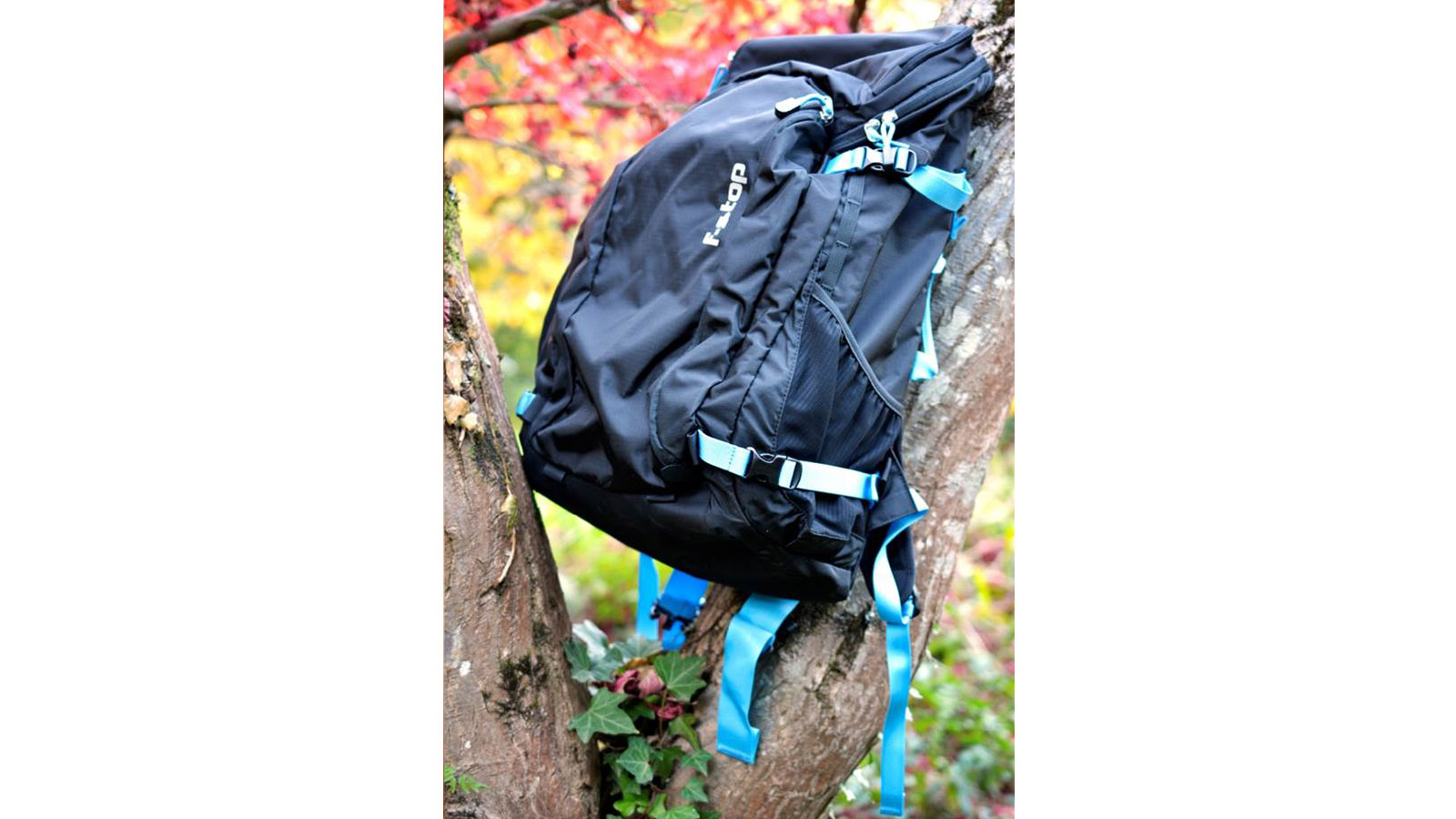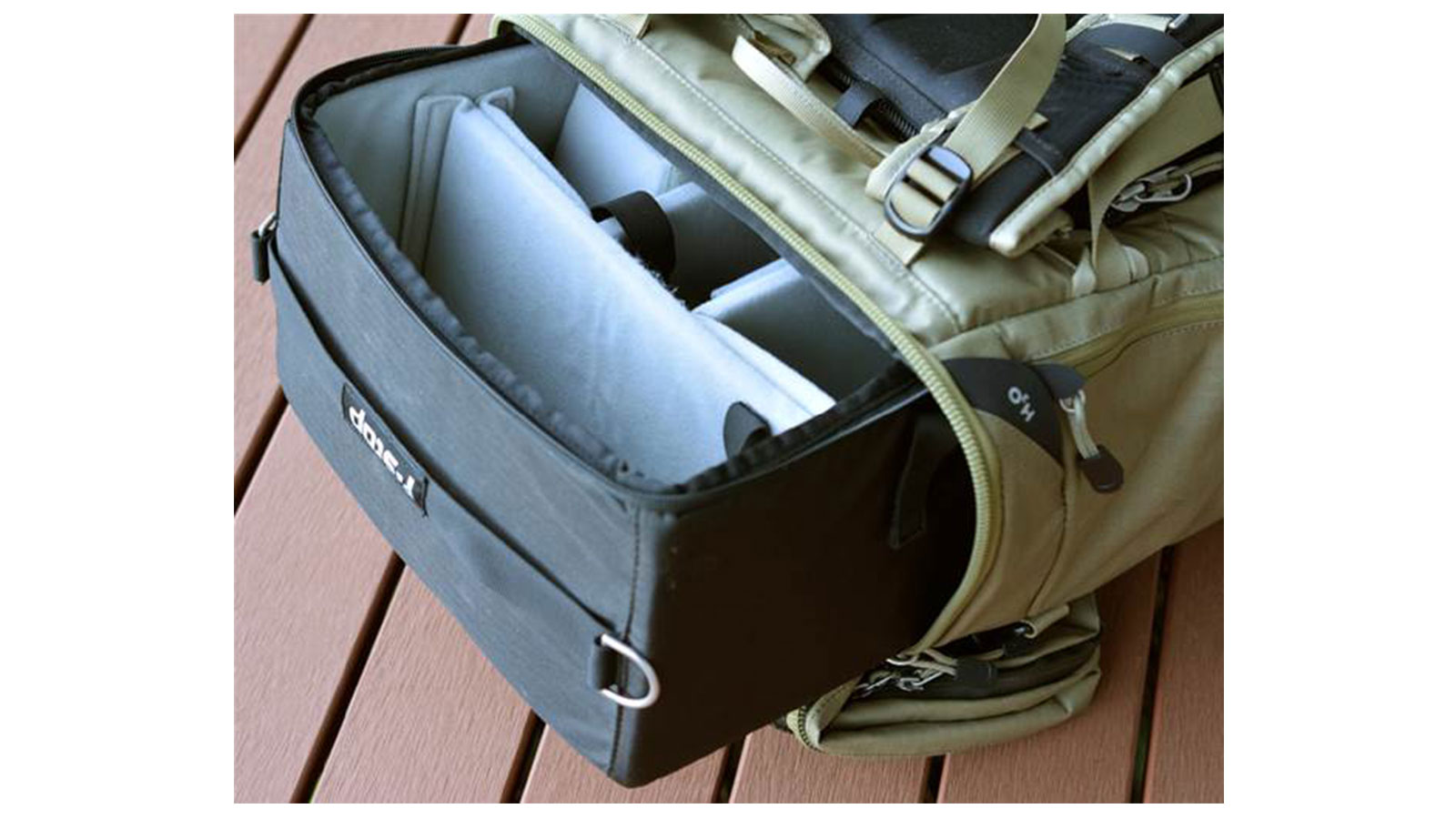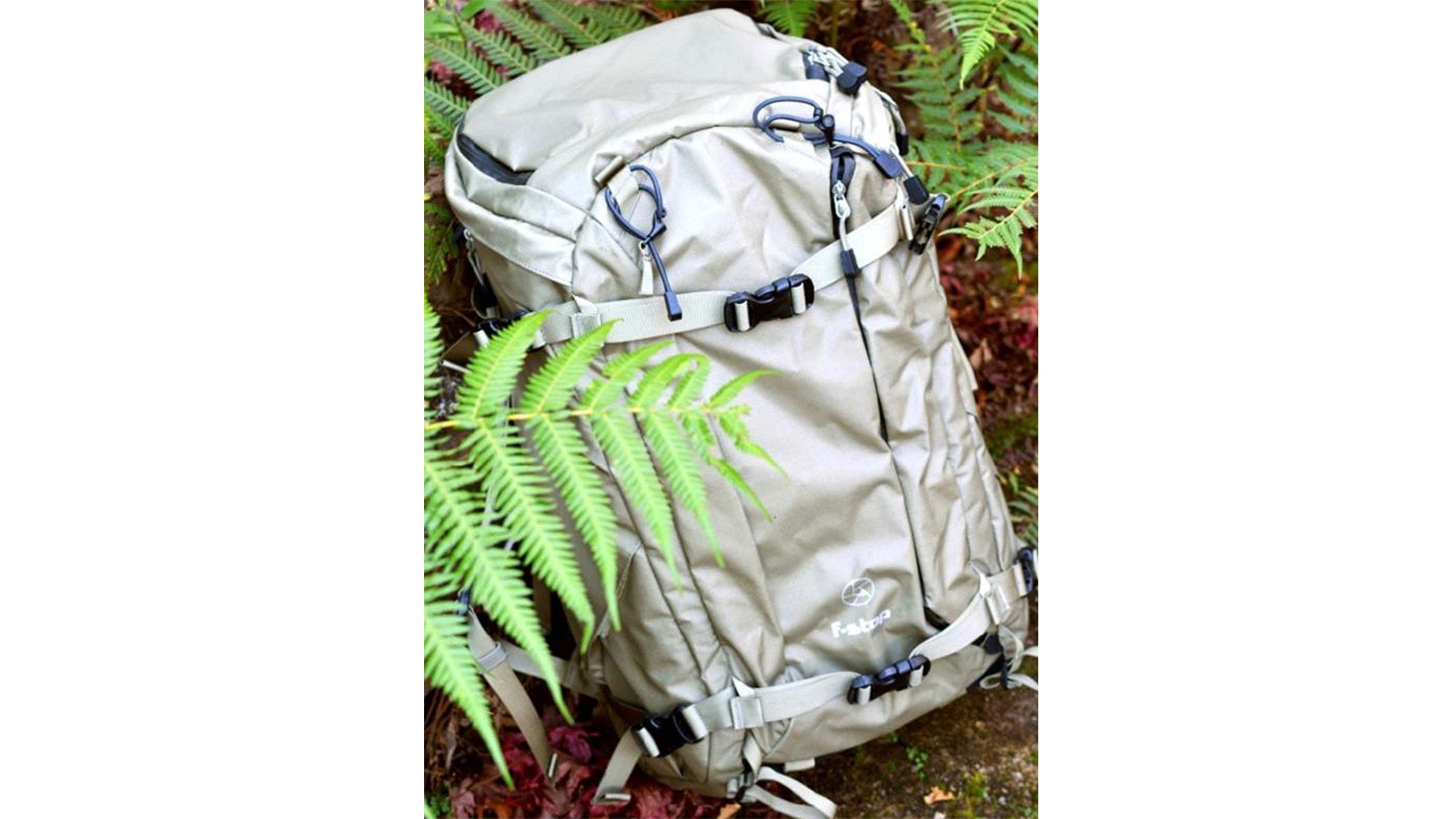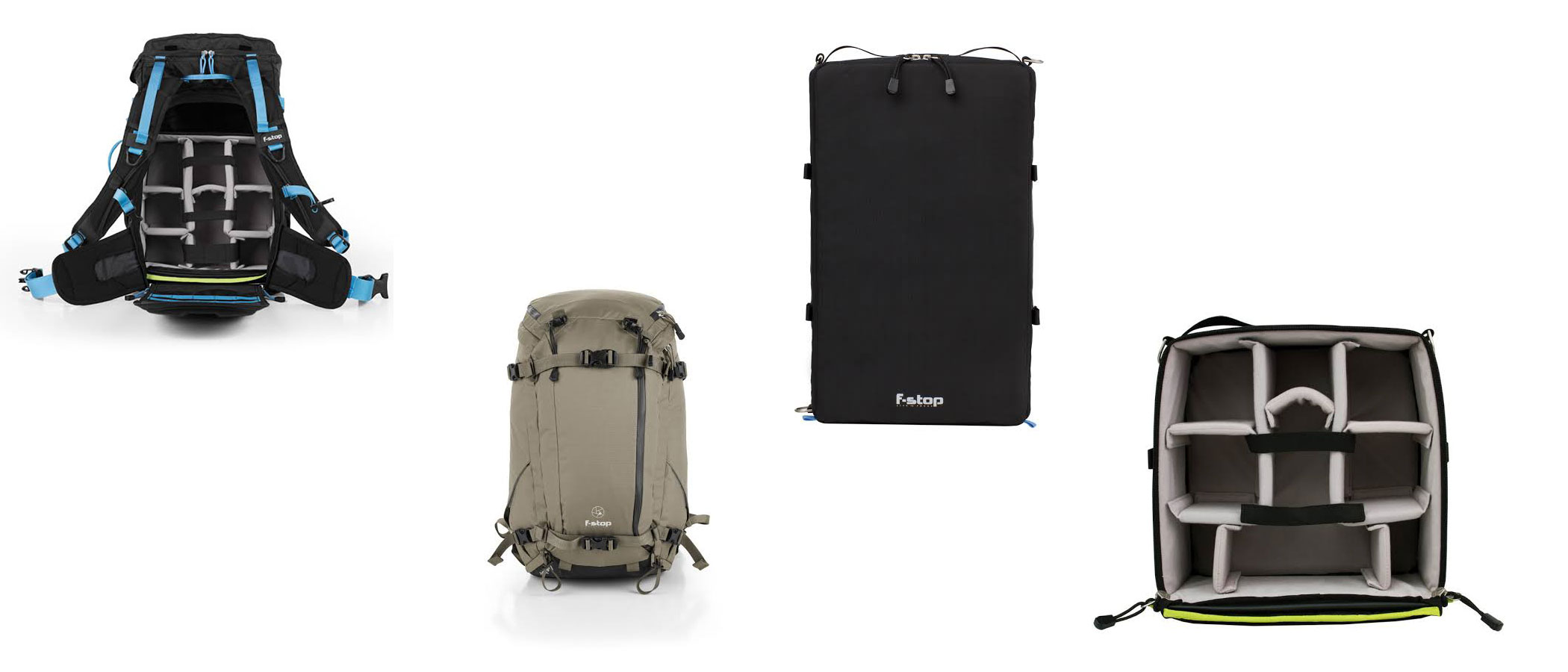Digital Camera World Verdict
The photo backpack market is a crowded one with plenty of excellent designs vying for your attention, but it’s flexibility and versatility that help the F-stop models stand out. Removable ‘internal camera units’ take modularity to a whole new level.
Pros
- +
‘Internal Camera Unit’ design is immensely practical
- +
ICUs are great for storing kit too
- +
Lightweight but strong
Cons
- -
Added versatility comes at a price
- -
Too many zips and clips
Why you can trust Digital Camera World
If you thought the camera market was competitive, it’s nothing compared to the huge range of brands and products available when it comes to things for carrying your cameras and lenses. Bags comes in a dizzying variety of styles – from fashionable to utilitarian – and camera backpacks in probably just as many designs and sizes.
The reality for most working photographers is that no one camera bag or pack suits all applications so you’re going to end up with a few… perhaps an all-purpose shoulder bag or satchel, then something smaller for when you want to travel light, and a pack for taking gear to more remote or challenging locations. Backpacks also make a lot of sense when you need to carry a lot of equipment since they allow for the better distribution of weight and allow for more flexible internal configurations.
When you think about it, just about every photographer is going to have a different requirement and so it’s often a case of finding the ‘best fit’ when choosing.

F-stop started out designing packs for adventure and outdoor photographers and film-makers so the emphasis was on lightness and flexibility in terms of both the internal and external designs.
A key solution here is F-stop’s ‘ICU’ which stands for ‘Internal Camera Unit’ and essentially functions as a case-within-a-case.
The ICUs come in a variety of ten sizes – from ‘XLarge’ to ‘Micro Nano’ – and can be mixed-and-matched with f-stop’s Mountain range of backpacks, depending on the combination of equipment that you want to carry. The ICUs feature heavy-duty foam sides with a water-resistant covering, their own carry handle, various sizes of interior dividers and both Velcro straps and connection hoops which secure them to the inside of the pack.
They have their own zippered covers (with a removable foam insert), but this can be folded away so items are immediately accessible via the pack’s main opening. For better security, this is at the rear pack (i.e. against your back), so it can’t be sneakily opened when you’re in a crowded location.
You can, of course, use the ICUs to store equipment long-term so you could organise multiple camera kits that are simply swapped in or out of the pack as required for the job in hand. You might, for example, have a dedicated ICU for your camera drone or video camera set-up (a dedicated Master Cine model is also available) or a compact mirrorless camera kit.
Once fitted inside the pack, the ICU ensures all the camera gear is kept separate from the other gear you might want to carry when shooting in more remote locations.

Going to the mountain
As the name suggests, f-stop’s Mountain series of photo backpacks is primarily designed for photographers who need to minimise weight without compromising the amount of camera equipment they need to carry onto location. Consequently, they employ internal aluminium frames to maintain both shape and stability without adding excessive weight. This frame also promotes a better balance, making the packs comfortable to carry.
Needless to note, the Mountain packs are also very well protected against the weather and have Oxford-weave ripstop nylon covering which is treated with Advanta, a thermoplastic polyurethane film which repels moisture. Additionally, protection from wet surfaces and contact with terrain is provided by a Hypalon reinforced base, and all the key zippered openings have weather flaps and concealed zipper ‘garages’.
The rear panel is made from moulded EVA to provide both cushioning and breathability, and the waist-belt has injection-moulded ‘Soft Flex’ EVA to enhance both the ergonomics and comfort.
On the outside, the f-stop Mountain packs have a range of attachment options for items such as a tripod or trekking poles. Additionally, ‘GateKeeper’ mounting loops allow for the attachment of bigger items via accessory straps which have snap-on/off cam-lock buckles.
A range of padded external pouches and lens cases is also available. The biggest pack in the range, the Shinn has an 80-litre internal capacity and yet weighs only
2.35 kilograms.
Add the Pro XLarge ICU – which weighs only 930 grams – and the total is still under 3.5 kilograms. And this combination has sufficient space to accommodate two mid-to-large D-SLRs and a range of lenses, including two fast prime telephotos such as a 300mm f2.8. If you’re shooting with a mirrorless kit – especially Olympus OM-D or Fujifilm X mount – then there’s even more room.

Light and weight
ProPhoto tested the Ajna model which f-stop describes as the “agile welterweight” of the Mountain range. With an internal volume of 40 litres, it’s still big enough to accommodate the Pro XLarge ICU which gives a total weight of a little under 2.7 kilograms.
However, fitting a smaller ICU – which is all many mirrorless camera users will need – leaves space for other items, such as clothing or supplies. F-stop even makes a range of ‘Packing Cells’ for these items, ensuring all the contents of your pack remain well-organised and usage of the internal space is optimised. There’s also a mesh pocket inside the lid and a multi-purpose internal sleeve (which, for example, will accommodate a laptop). On the outside are two full-length zippered side pockets, a zippered front compartment (also essentially full-length and which is handy for items such as extra clothing) plus a zippered compartment in the top of the lid which opens to reveal a stretchable mesh pocket with a Velcro fastening. No, we don’t think you’ll have problems finding places for everything either.
Amazingly, despite all these storage spaces, externally the Ajna complies with carry-on luggage dimensions (although whether you’ll be able to stay under the 7.0 kilogram weight limit is another matter).
If you want to travel even lighter, there’s the Kashmir UL model (the initials stand for ‘Ultra Light’) which retains all the key features of the bigger packs, but combines a 30-litre internal capacity with a weight of just 1.1 kilograms. Add, for example, the ‘Shallow Medium’ ICU (the standard medium-sized ICU will fit as well) and you’re still only looking at an all-up weight of just over 1.5 kilograms, but you can still pack a lot in whether using a D-SLR or mirrorless camera system. Consequently, it’s a very capable all-round day pack.
With so many storage and attachment possibilities, the Mountain series backpacks look a bit daunting at first… there seem to be zips, clips and straps everywhere, but it doesn’t take long to become familiar with the design and layout. The ICUs not only promote much better organisation – backpacks can be notoriously hard to keep in order internally especially if you’re carrying a mixture of gear and personal items – but also more efficient use of space and much easier handling of equipment. Better still, with all the different ICU sizes (and they’re not expensive in camera bag terms), the one backpack can end up serving a wide variety of applications as there are multiple ways of configuring the carrying space.
Verdict
There are some very well-designed photo backpacks available (the MindShift series from Think Tank springs immediately to mind, and, indeed, has a similar genesis), but the f-stop Mountain models are superior in convenience, flexibility and overall usability… especially when you’re on location in challenging conditions and need to work quickly. The internal frame and external ergonomics deliver exceptional comfort, enhanced by the capacity to establish a better weight distribution which benefits the overall balance. There’s nothing more fatiguing than continually fighting with your pack if it’s shifting around when you’re walking, but even the fully-loaded Ajna almost felt like it wasn’t there, which is exactly what you want on a longer trek.
The idea of removable internals isn’t new, of course, but f-stop has taken it a lot further with its ICU concept which, consequently, has added usefulness as a flexible storage system for sets of equipment when in the office or studio… but they’re also ready to immediately go on location when required. Not only are you always going to know exactly where everything is, you’re a lot less likely to leave something important behind (provided, of course, that you’re disciplined about always putting things back where they should go).
It’s not possible over a short test to fully evaluate durability, but suffice to say the Mountain packs we tried out were very well made and finished with a very high standard of workmanship even on the smallest details. However, the reinforced base, tough exterior fabric, multiple stitching runs at key anchor and attachment points using nylon thread, heavy-duty YKK zippers and use of engineering thermoplastic for all the buckles and clips suggest these packs will last well, even they do get bashed about a bit on location. And, most importantly, your valuable gear is going stay well protected inside. Add in the extra convenience and comfort of the f-stop Mountain packs and perhaps making a decision in a crowded market isn’t so difficult after all.
Read more
- The best camera backpacks
- The best camera sling bags
- The best messenger bags for photographers
- The best luxury leather and canvas camera bags
- Hard cases for cameras
- The best roller bags for your camera
- The best photography accessories
- The best flashguns
- The 10 best travel cameras
- The best cheap cameras and deals
- The best tripods for travel

